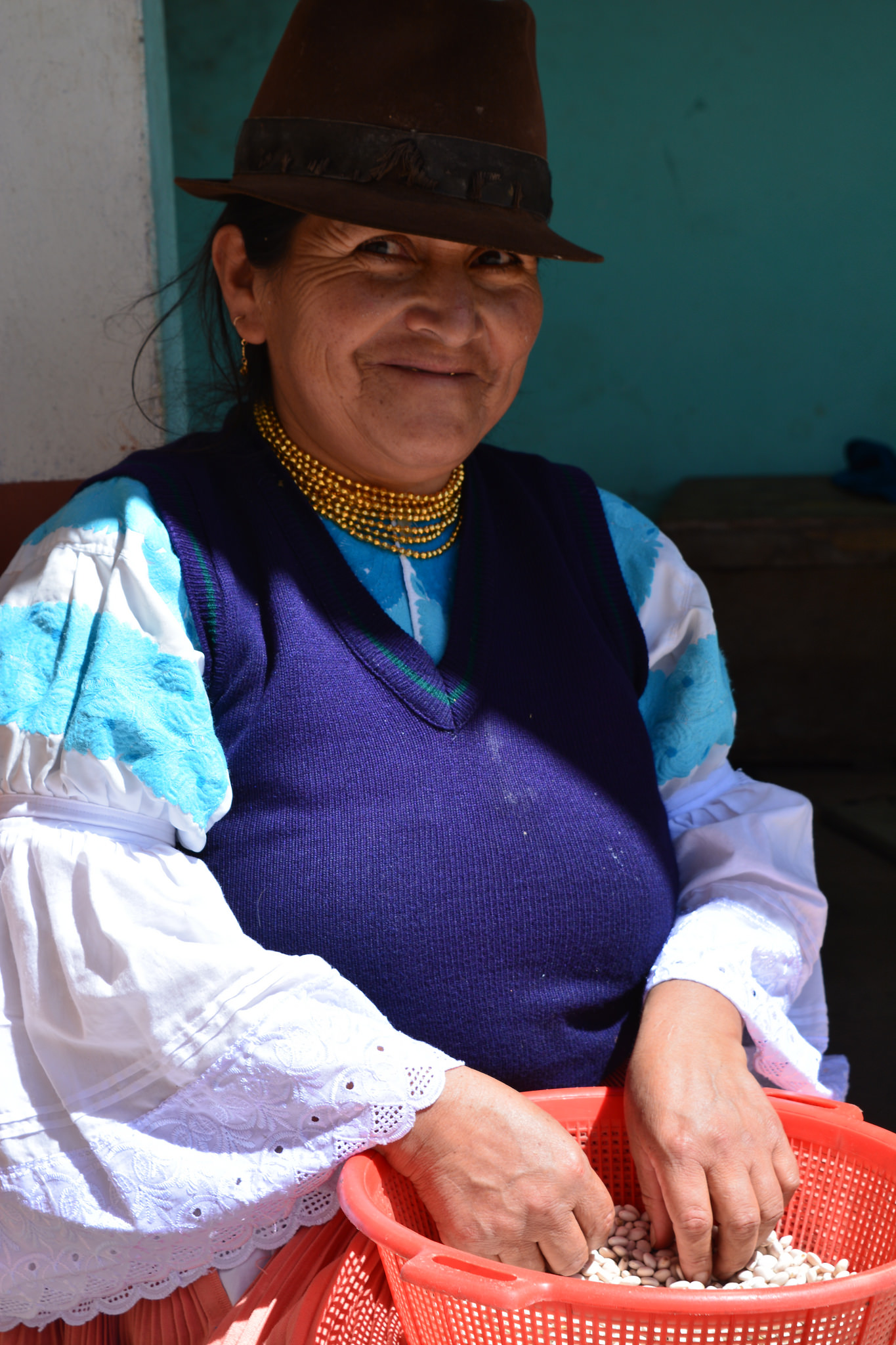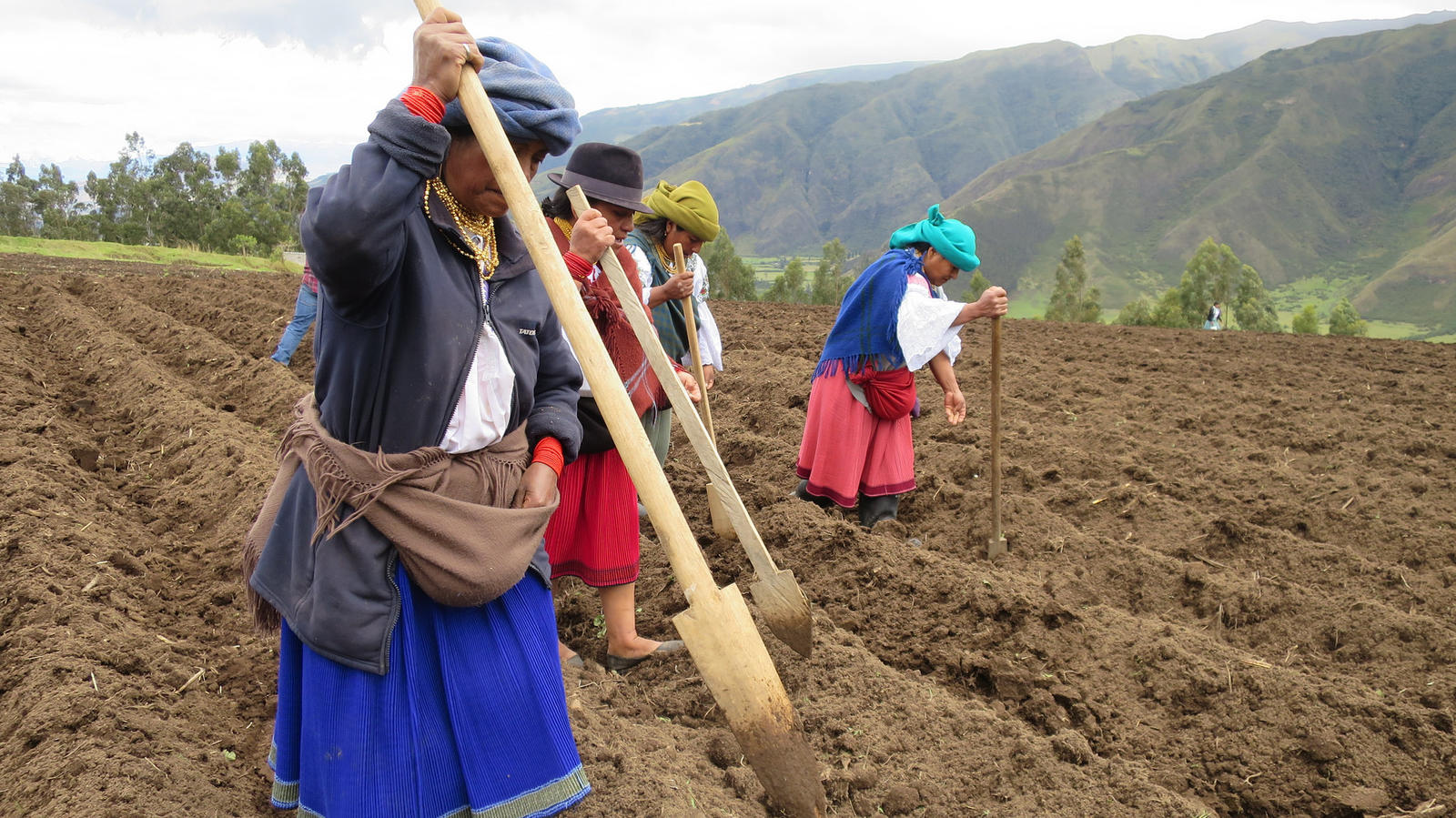April 4, 2017
Nutrition, income, and gender equality in a legume: the use of Andean lupin (chocho) in Ecuador
During the last few years, Ecuador has researched the properties of Andean Lupin, or “chocho”, and has dedicated part of the national nutrition policies to the conscious expansion of the cultivation toward its great potential for improving the health and the nutritional status of marginalized populations.
Chocho, or Andean Lupin, is quite possibly one of the legumes with the least known uses and properties worldwide. That is not the case for the Ecuadorean Government. Throughout recent years the government has researched the properties of this legume and has included it as a key element of its national nutritional policy the conscious expansion of the cultivation based on its great potential to improve the health and nutritional status of populations at risk of exclusion from Ecuador.
According to the Food and Agriculture Organization of the United Nations (FAO), chocho is a highly nutritional food. Nearly 50% of it is protein and essential fatty acids, in addition to carbohydrates, vitamins, and minerals. Chocho has the property of being able to be cultivated in dry and sandy areas located within 2,400 and 3,500 meters above sea-level, and thus, has great potential to be converted into a very important food source in the mountainous area of the Sierra de Ecuador, where the part of the population with the highest levels of nutritional deficiency in the country lives. Chocho is rich in iron and other minerals such as phosphorous and zinc. And it is gluten free.
Pilot program in Imbabura
With this premise, the SDG Fund project in Imbabura, Ecuador, has promoted the integrated focus on the production of chocho: which reaches from strengthening abilities in production, management, and harvesting, to the demonstration of how it can be incorporated into a family diet, supporting commercialization, and climatic adaptations to reduce post-harvest losses. Chocho is also part of the Andean culture, having played an important role in past systems of production. Its cultivation has lost value in recent centuries, but today there is an opportunity to change this trend.
Ecologically, chocho is recognized as one of the most efficient legumes for stabilizing atmospheric nitrogen, and in that way, it enriches the land to make it more productive. Additionally, it is one of the best fertilizers. Its adaptation makes it tolerant to poor planting soil and low temperatures.
Mauricio Celín, from Cantón de Pimampiro (altitude of 2,500 meters) explains that this the first time that “we planted chocho in large quantities, (and) it is going to be (used) for home consumption as well as for commercialization and for getting seeds.”
In this initiative, 42.37% of the participants are women. While carefully selecting chochos that will be used for planting, Aida Sandoval, a 54 year old resident of the Cochas community, explains that her 10 grandchildren love to bring chochos with tostado (sandwiched in Spanish) to school. “All of my grandkids bring it to school in their lunches. We used to grow a different chocho that tended to grow taller but didn’t produce as much to harvest, but it died and we didn’t have any other seeds. Now, we have a (new) seed.”
In fact, the program has identified seed production as key, and, in seeking the most sustainable methods, as the program finishes in 2017, several chocho producers have trained to become certified chocho seed specialists.

Agrobiodiverse plots
In order to have a long term impact, members of the communities share that it is necessary to diversify and commercialize. For example, Mauricio explains that he would also like “to try quinoa to see what it is and to experiment a little. It is good if they support the farmer and teach us because we don’t always know these plants.”
Producers are being trained in a practical way with experimental batches, parcels of land where the farmers can learn to manage the crops. As in all new processes, Diana describes, technical assistance and collaboration are necessary. Diana explains with satisfaction that through the cultivation of one hectare the Chilco community, where she is a native from, has had the opportunity to grow chocho for the first time. “It’s was good for my children and their nutrition.” It was even better economically, “thanks to the training and the seeds, we produced 10 quintales (100lbs each) that I sold in the market at the good price of $80 per quintal.”
For whoever read this story, chocho probably seems like a distant and unknown product, rarely used in the daily diet, but it is not that anymore in Imbabura where programs such as the SDG Fund, implemented jointly by FAO, WFP, UNICEF and PAHO are helping to improve family health, by preserving the traditional preparation of foods and creating new opportunities for income. All of this in hope to advance the Sustainable Development Goals.
Translation by Loni Thorson.








